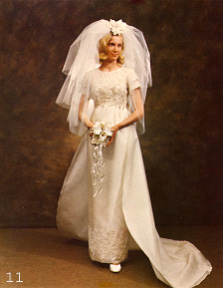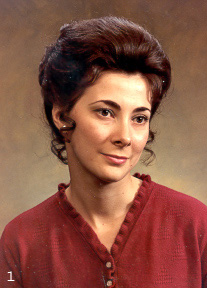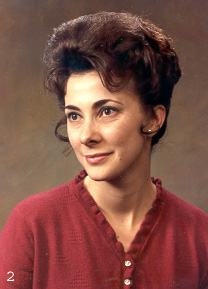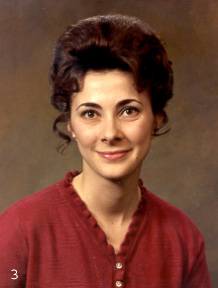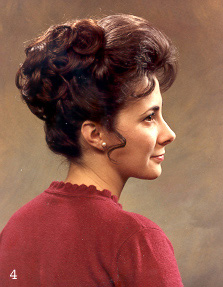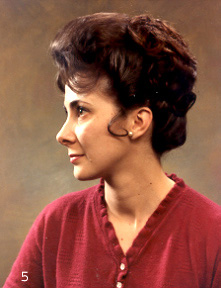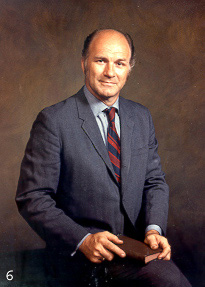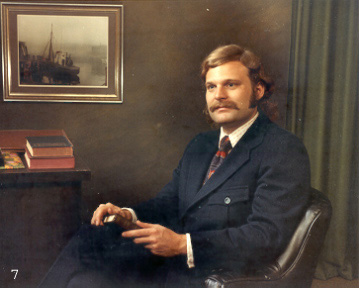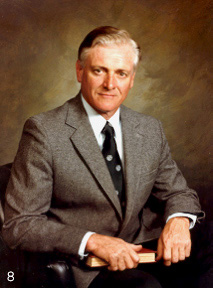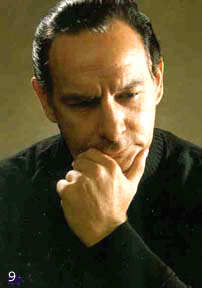|
The Zeltsman Approach to Traditional Classic Portraiture Chapter 2 The when and how the Zeltsman approach was introduced Some 50 years ago, I received a call from a photographer friend from another town. He asked me if I’d like to attend a five-day class with Van Moore, a well-known portrait photographer.....especially renowned for his bridal portraiture. I said that I would.....and I did. That is where my story begins. Van Moore opened the session by showing us a small four-inch high figurine of the famous head and shoulders pose of Aphrodite. He told us he photographed it from five different angles, and used slides to show us the results. We saw five different, yet perfectly beautiful poses of Aphrodite, achieved simply by a change of camera angle, and readjustment of the lighting.
The bride was ready, and Van arranged her in a graceful full length standing pose. He then asked us to mentally crop and look only at the head and shoulders close-up area of the pose, and there was the Aphrodite pose. Compare with the second from the left photo of the figurine) He then pointed out how the lines of the Aphrodite composition of the head and shoulders pose continue right on reflecting the graceful lines of the S curve throughout the entire pose of the bride. Thus this one pose may be photographed as a head and shoulders close up, a three quarter pose, or in full length. As I watched Van pose the bride, I became aware that every pose he demonstrated, seated or standing, reflected the graceful elegance of the S curve, and I realized that each pose Van arranged, could be photographed effectively from 3 o 4 different angles, without changing the pose, by merely changing the camera perspective, and readjusting the lighting.....like photographing the figurine. "Thank you, Van Moore" The wonderful session with Van Moore ended. I got back to my studio and looked at my work on the walls. I looked at all of the portraits of women, not just brides, discovered there were several that I particularly liked....and realized that they were in the Aphrodite pose. Interestingly, I also realized that I came up with these poses purely by trial and error, and not as a result of knowing how to do it. But not anymore. Van Moore is responsible for triggering my thoughts toward rethinking and changing my approach to posing. My New Approach What was it that jolted my brain, as I watched Van create all those beautiful poses? First, the realization that every full length pose he arranged, standing or seated, reflected the graceful lines of the "S" curve (as Aphrodite). Then, looking at the comfortably natural way the body position related to the head position in every pose Van demonstrated, I realized something even more important. I saw in my mind 3 or 4 equally effective poses of that arrangement, by stepping over in front of one or another facial view, and looking at the pose from that perspective.
Example: The five lovely portraits above of the young woman, are the result of photographing the same pose from five different camera perspectives, without changing the pose in any way, as was done with the Aphrodite figurine. I came away from that session with Van Moore, with what was to me then, two interesting and important discoveries. One: Posing people in a natural classic style follows a specific pattern. (This will be detailed in a later Chapter). Two: That a pose arranged reflecting a specific composition, can be photographed showing different angles of the face, and in a variety of croppings. (Detailed in later Chapters) That was at the time (1950’s) when I decided to concentrate all my efforts on Portrait Photography. And, of course, my approach to the technical aspects of portraiture then, was the same as other photographers. But the session with Van Moore changed that. I began thinking of other things that should be changed, and that started me on the way to developing what is now "My Approach to traditional Classic Portraiture. The first important change needed was based on the following: FACT: The dominant point of interest in classic portraiture must be the subject’s face and expression. And because the subject’s body naturally remains in a position that is related to the face, why then do photographers begin a portrait session by posing the subject’s body first, and then have to accept whatever view of the face is available from that angle??? Why not begin by deciding first which view of the face to photograph, and then arranging the body pose to support that view.??? And so, indeed, the first significantly important change in my approach to portraiture was to begin a portrait session not by posing the subject, but to examine and evaluate the subject’s facial features, and decide which facial view, or views, to photograph. Then arranging the necessary pose to support the chosen facial angle. The end result is an effectively planned image, thus eliminating the probing trial and error method of posing. What about posing the man? Still 50 years ago, having developed my technique for posing the woman, based on the Aphrodite composition, I began to wonder, perhaps there was also some particular common composition for posing the male. I began looking at many portraits of men by top portrait photographers. I searched all kinds of publications. Particularly, I watched print competitions, and I discovered a common denominator in all the images I liked. Compositionally, they all seemed to fit into a C shape, rather than the S curve that was the feminine pose. I worked and practiced with a man until I was able to arrange the full range of poses, head and shoulders, three-quarter length and full length, seated or standing, all reflecting the C shape composition, and named it the Masculine Composition.
See Chapter 3 for detailed coverage of why and how of facial evaluation. And Chapter 4, 5, 6, and 7, to understand the two posing compositions I identify as Masculine and Feminine. There is no special significance to the terms "Masculine or Feminine" composition, other than for the purpose of identification. NOTE: All of my portraits represent a carefully planned image, that begins with a facial evaluation and planning session prior to posing, and then every subject is posed in either a masculine, or feminine composition. You’ll find this fully detailed and illustrated in the Chapters on Posing Men, and Posing Women. |

